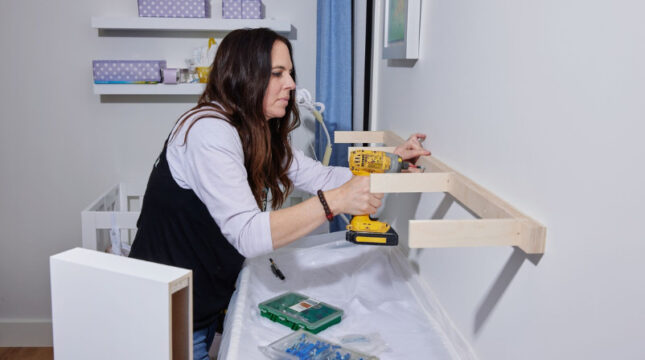There are variable costs, like your utilities, transportation, food, cleaning supplies and activity materials.
Then there are one-time costs like furniture, cribs, highchairs and other baby accessories. You’ll also need to budget for child-sized drawing tables, small stools, chairs, toys and other kid-friendly equipment.
Even with a home daycare business, you’ll need to buy safety equipment and “childproof” interior and exterior spaces. Safety gates, childproof locks, first aid kits, and fire extinguishers are all must-haves.
In addition to the usual toys and art supplies, daycares are investing in technology for both kids and parents. They have sturdy childhood tablets for early childhood education activities and Bluetooth speakers for music. Similarly, some operators have daycare cameras for parents to tune in or smartphones so caregivers can text and send photos.
Here is an average budget for daycare provider expenses for a home-based childcare business serving four to six children:
- Furnishings: $ 2,500
- Equipment: $ 2,500
- Supplies: ($50 per child per month): $2,400 to $3,600
- Water and trash: $1,800
- Phone and electric: $4,000
- Business licenses and fees: $1,200
- Food and beverages: $4,800
- Transportation: $3,600
- Part-time aides/substitutes: $10,000
- Advertising and marketing: $4,000
- Total: $36,800 to $38,000
There will also be costs as your business grows. You’ll want to spend a bit of money on marketing. And it’s a good idea to set aside money for repairing or upgrading your space.
Costs of running a daycare center in a commercial space
If you’re not operating your daycare business out of your home, you’ll need to add rental or leasing costs to your fixed costs.
As a small business, you’ll be asked to sign a lease for at least 12 months. You’ll find that most commercial leases are a little more complex than residential home or apartment leases. Most commercial spaces will require you to have business insurance.
Center-based daycare businesses can accommodate far more children than home-based businesses. Many daycare centers have at least two to three classes of different ages, with eight to 12 children in each.
For a small center-based daycare with 16 children, you’ll want to factor in at least $2,000 a month for your leasing costs — more if you’re in an expensive city.
Don’t forget to factor in extra costs if you want to upgrade your daycare center space with leasehold improvements like child-safe bathrooms, water fountains or kitchen areas.
Claiming daycare expenses on your taxes
If your business is incorporated, you should ask an accountant or registered tax agent to prepare your taxes. Your operating expenses, including salaries and wages, are deductible as business costs. You will pay corporate tax based on your business’s profit at the end of each tax year.
If you’re a sole proprietor, you can deduct your expenses on Schedule C of your individual income tax return. State laws regarding what you can deduct will vary, but the IRS guides home-based business expense deductions.
For example, say one portion of your home is used exclusively for your daycare business. In that case, you may be able to deduct the cost of that part of your home, including a portion of your mortgage or rent payment.







